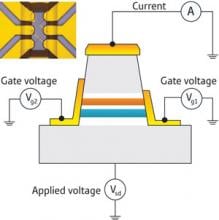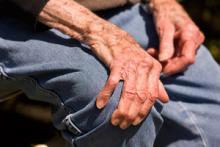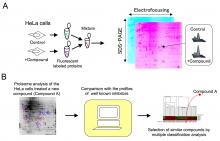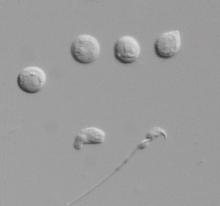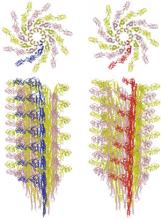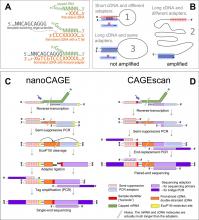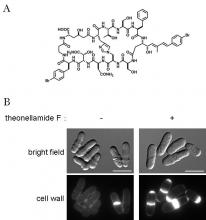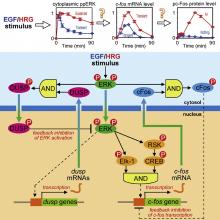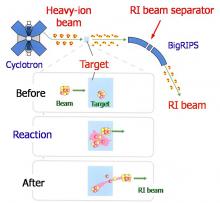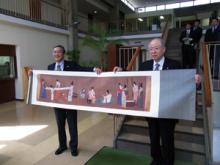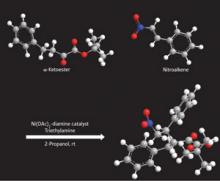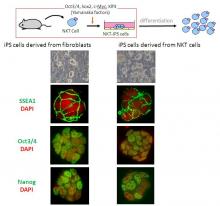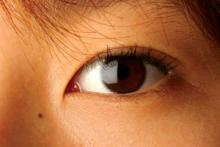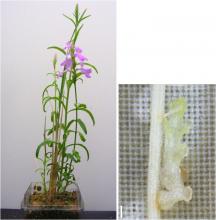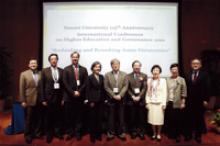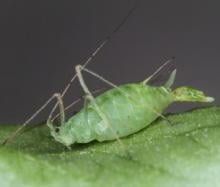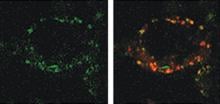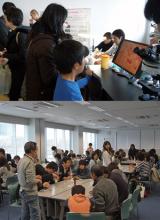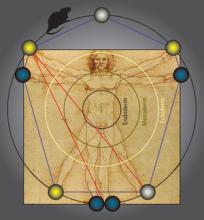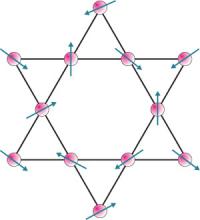Japan
News
18 Jun 2010
The discovery of novel risk factors for osteoarthritis illuminates a probable role for the immune system in the pathology of this joint disorder
17 Jun 2010
Tokyo, 17 June - Researchers at the RIKEN have demonstrated that a technique for tagging and profiling proteins can be used to accurately classify anti-cancer drugs based on the molecules they target. The technique promises to accelerate the process of proteomic profiling and contribute to more effective drug discovery.
14 Jun 2010
Researchers at the RIKEN BioResource Center are storing and restoring life from preserved gene lines.
14 Jun 2010
Motile bacteria switch between swimming patterns through conformational changes of a constituent protein of the propeller-like flagellum
14 Jun 2010
Fresh insights into the workings of the ‘internal timetable’ of plants could ultimately guide the engineering of hardier, faster-growing crops
13 Jun 2010
Tokyo, 13 June - Researchers in Japan and Italy have developed new methods for biological analysis with dramatically higher sensitivity and detail than earlier techniques, expanding our understanding of RNA and its function in the cell. The methods open the door to the study of diseases well beyond the reach of current technologies.
13 Jun 2010
Tokyo, 13 June - A research team in Japan has uncovered the mechanism underlying the antifungal activity of theonellamide (TNM), a bioactive compound found in a species of marine sponge. The finding provides new insights toward the development of antifungal drugs, with broader applications to drug analysis in areas such as cancer research.
08 Jun 2010
Tokyo, 8 June - Critical missing links in a signaling-transcription cascade responsible for pivotal cell-fate decisions have been described for the first time in a paper in Cell.
08 Jun 2010
Tokyo, 8 June - The world’s most powerful beam of heavy ions has enabled Japanese scientists and their international collaborators to uncover 45 new neutron-rich radioisotopes in a region of the nuclear chart never before explored.
04 Jun 2010
On April 21, a delegation of 12 dignitaries from China visited the RIKEN Wako campus to meet with RIKEN President Ryoji Noyori and a number of RIKEN directors.

04 Jun 2010
The disruption of melatonin production in laboratory mouse strains represents an apparent evolutionary advantage in terms of reproductive development
04 Jun 2010
A set of mutant yeast strains allows researchers to identify structural elements that help motor proteins to get moving
04 Jun 2010
Finely tuned nickel complexes combine important biomolecular precursors with high efficiency and low environmental impact
01 Jun 2010
Tokyo, 2 June - A technique for producing natural killer T (NKT) cells, known for their role in suppressing tumor growth, has been successfully demonstrated for the first time using induced pluripotent stem (iPS) cells. The technique opens the door to effective new cell-targeted treatments for cancer.

28 May 2010
On April 1, as part of efforts to reach a broader audience in Japan and across the world, RIKEN launched its first ever official channel on the video distribution website YouTube.

28 May 2010
Solving part of the long-standing puzzle of the electronic properties of an enigmatic temperature phase of a titanium oxide may yield new clues
28 May 2010
Proper maturation of the visual cortex in mice, and possibly humans, depends on a maternal gene
27 May 2010
Tokyo, 27 May - A research team at RIKEN, Japan’s flagship research organization, has uncovered the first ever evidence of nuclear gene transfer from host to parasite plant species. The discovery, reported in Science this week, hints at a greater role for horizontal gene transfer in plant evolution.
24 May 2010
On May 7, 2010, at the invitation of Yonsei University in Korea, President Seike attended the International Conference on Higher Education and Governance, held as part of the Yonsei University 125th Anniversary.
24 May 2010
TOKYO, 24 May - The Bioinformatics And Systems Engineering (BASE), a division of RIKEN, Japan’s flagship research institute, is holding its first ever International Rational Genome Design Contest (GenoCon) on the semantic web between May 25 and September 30.

21 May 2010
On March 18–19, RIKEN held its second symposium on biosupercomputing in downtown Tokyo, focusing on new directions in life science research made possible by high-performance supercomputing
21 May 2010
Genomic data reveal surprising insights into the essential partnership between a widespread plant pest and a symbiotic bacterium dwelling within its cells
21 May 2010
Discovery of the heaviest known Borromean nucleus provides a new testing ground for fundamental nuclear models
21 May 2010
Inducing cells to destroy a misfolded protein alleviates the symptoms of Huntington's disease in mice
14 May 2010
As Japan’s flagship research institute, one of RIKEN’s missions is to share its research findings with the general public to boost awareness and curiosity about science.
14 May 2010
An atlas of protein–protein interactions reveals the collaborative efforts underlying gene regulation in mice and men
14 May 2010
The presence of exotic particles, called spinons, might now be detectable in a magnetic field, providing insight into quantum magnet properties
Researchers
Sorry, no researchers coming up for this topic.
Giants in history
Ruby Sakae Hirose (1904 – 1960) was a Japanese-American scientist whose research contributed significantly to our understanding of blood clotting, allergies and cancer.
Haisako Koyama (1916 – 1997) was a Japanese solar observer whose dedication to recording sunspots – cooler parts of the sun’s surface that appear dark – produced a sunspot record of historic importance.
Michiaki Takahashi (17 February 1928 – 16 December 2013) was a Japanese virologist who developed the first chickenpox vaccine.
Toshiko Yuasa (11 December 1909 – 1 February 1980) was the first Japanese female physicist whose research on radioactivity shed light on beta decay – the process in which an atom emits a beta particle (electron) and turns into a different element.
Baron Kitasato Shibasaburo (29 January 1856 – 13 June 1931) was a Japanese physician and bacteriologist whose work led to a new understanding of preventing and treating tetanus, diphtheria and anthrax.
By isolating soil microorganisms and studying the compounds they produce, Satoshi Omura (born 1935) discovered almost 500 organic compounds with unique properties that were produced by these microorganisms, including many new antibiotics.
In 1915, pathologist Katsusaburo Yamagiwa and his research assistant Koichi Ichikawa became the first to prove that chronic exposure to chemicals can cause cancer.
In 1915, Koichi Ichikawa along with pathologist Katsusaburo Yamagiwa became the first to prove that chronic exposure to chemicals can cause cancer.
Reiji Okazaki (8 October 1930 – 1 August 1975) and Tsuneko (7 June 1933) were a Japanese couple who discovered Okazaki fragments – short sequences of DNA that are synthesized during DNA replication and linked together to form a continuous strand.
Tsuneko (7 June 1933) and Reiji Okazaki (8 October 1930 – 1 August 1975) were a Japanese couple who discovered Okazaki fragments – short sequences of DNA that are synthesized during DNA replication and linked together to form a continuous strand.
Husband and wife team, Kimishige (3 December 1925 – 6 July 2018) and Teruko Ishizaka (28 September 1926 – 4 June 2019) discovered the antibody class Immunoglobulin E (IgE) that triggers allergic reactions. They also discovered that IgE antibodies attach to white blood cells, known as mast cells, releasing histamine, which causes allergic reactions.
Husband and wife team, Kimishige (3 December 1925 – 6 July 2018) and Teruko Ishizaka (28 September 1926 – 4 June 2019) discovered the antibody class Immunoglobulin E (IgE) that triggers allergic reactions. They also discovered that IgE antibodies attach to white blood cells, known as mast cells, releasing histamine, which causes allergic reactions.
Japanese chemist Takamine Jokichi (3 November 1854 – 22 July 1922) founded the Tokyo Artificial Fertilizer Company, where he isolated a starch-digesting enzyme (named takadiastase) from the fungus Aspergillus oryzae.
Hideki Yukawa (23 January 1907 – 8 September 1981) was awarded the Nobel Prize in Physics in 1949 for predicting the existence of the pi meson subatomic particle. Japan’s first Nobel laureate, Yakawa also expressed his support for nuclear disarmament by signing the Russell–Einstein Manifesto in 1955.
Shinichiro Tomonaga (31 March 1906 – 8 July 1979), together with Richard Feynman and Julian Schwinger, was awarded the Nobel Prize in Physics in 1965, for their contributions to advance the field of quantum electrodynamics. Tomonaga was also a strong proponent of peace, who actively campaigned against the proliferation of nuclear weapons and promoted the peaceful use of nuclear energy.
Japanese chemist Kenichi Fukui (4 October 1918 – 9 January 1998) was the first Asian scientist to be awarded the Nobel Prize in Chemistry. Together with Roald Hoffman, he received this honour in 1981 for his independent research into the mechanisms of chemical reactions.
Minoru Shirota (April 23, 1899 – March 10, 1982) was a Japanese microbiologist who invented the popular fermented drink Yakult.
Japanese physicist Ukichiro Nakaya (1900-1962) made the world’s first artificial snowflakes. He started his research on snow crystals in the early 1930s at Hokkaido University, where there is an unlimited supply of natural snow in winter. By taking over 3,000 photographs, he established a classification of natural snow crystals and described their relationship with weather conditions.
The techniques that make industrial pearl culturing possible were developed over a century ago at the Misaki Marine Biological Station in Japan. The station’s first director, Professor Kakichi Mitsukuri, emphasized to Kokichi Mikimoto in 1890 that stimulating pearl sac formation was important for pearl growth, and they went on to successfully develop methods for culturing pearls.
The field of solid-state ionics originated in Europe, but Takehiko Takahashi of Nagoya University in Japan was the first to coin the term ‘solid ionics’ in 1967. ‘Solid-state ionics’ first appeared in 1971 in another of his papers, and was likely a play on ‘solid-state electronics’, another rapidly growing field at the time.
Chika Kuroda (24 March 1884 – 8 November 1968) was a Japanese chemist whose research focussed on the structures of natural pigments.
Motoo Kimura (13 November 1924 – 13 November 1994) was a Japanese theoretical population geneticist who is best remembered for developing the neutral theory of molecular evolution.
Osamu Shimomura (27 August 1928 – 19 October 2018) was a Japanese organic chemist and marine biologist who dedicated his career to understanding how organisms emitted light.
Kikunae Ikeda (8 October 1864 – 3 May 1936) was a Japanese chemist who discovered the fifth basic taste, umami.
Umetaro Suzuki (7 April 1874 – 20 September 1943) was a Japanese scientist best remembered for his research on beriberi, a disease caused by vitamin B1 deficiency, characterized by limb stiffness, paralysis and pain.
Kono Yasui (16 February 1880 – 24 March 1971) was a Japanese botanist who researched the genetics of poppies, corn and spiderworts and surveyed the plants that had been affected by the nuclear fallout after the atomic bombings of Hiroshima and Nagasaki.
Hitoshi Kihara (1893 – 1986) was one of the most famous Japanese geneticists of the 20th century. One of his most significant contributions was identifying sex chromosomes (X and Y) in flowering plants.
Michiyo Tsujimura (17 September 1888 – 1 June 1969) was a Japanese agricultural scientist and biochemist recognized for her research of green tea components.
A Japanese surgeon, Tetsuzo Akutsu (20 August 1922 – 9 August 2007) built the first artificial heart capable of keeping an animal alive.
Ogino Ginko (3 March 1851 – 23 June 1913) was the first registered female doctor to practise modern medicine in Japan.
Japanese geochemist Katsuko Saruhashi developed the first method and tools for measuring carbon dioxide in seawater


